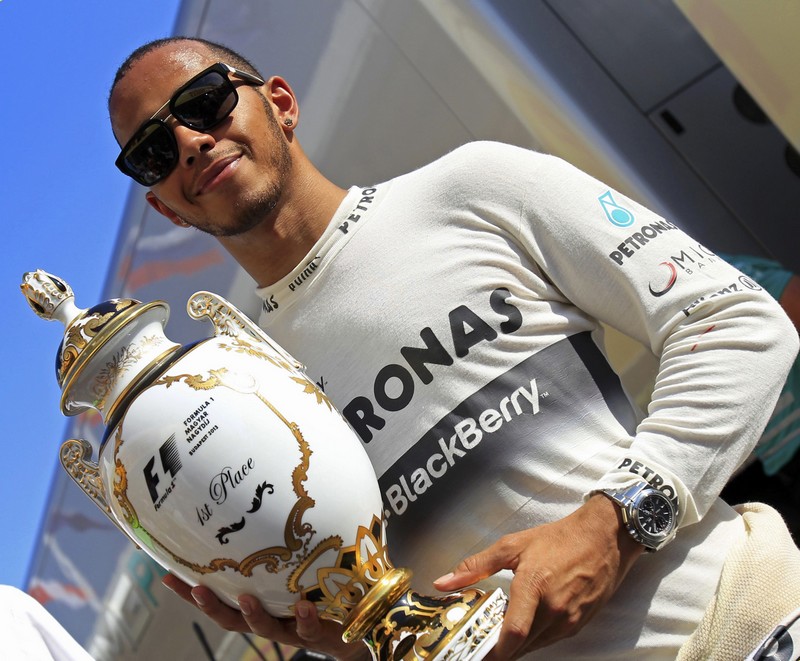Progress of a sort in the interminable quest for a new Concorde Agreement was confirmed as the third practice session began on Saturday morning at the Hungaroring. The document binds together the teams to Formula One Group as the commercial rights-holder and the FIA, world motorsport's governing body, as the sanctioning body and the sport has operated without one all year, relying on bilateral agreements with ten of the 11 teams. The FIA has been holding out for more money, to help fund its many automotive safety campaigns, while the teams want more say in how rules are created and changed. Now, it seems, agreement is finally on the horizon.
'The Formula One Group and the FIA have signed an agreement setting out the framework for implementation of the 2013 Concorde Agreement', read a joint statement on Saturday, announcing the roadmap for progress. 'This agreement will come into force upon approval by the respective governing bodies of the signatory parties in the coming weeks'.
The new agreement, once signed, will run for seven years, until 2020, and should be signed and sealed before Jean Todt runs for re-election as FIA president at the end of the year. With the news of a potential challenger to Todt, in the form of Englishman David Ward, director general of the FIA Foundation, emerging in recent days, it makes sense for the Frenchman to get the FIA's most important contract in the bag as soon as possible, to add to his list of achievements since taking getting the top job in October 2009.
2021 vision
Bernie Ecclestone signed another important document over the weekend in Budapest, a new contract with Hungarian authorities to stage a Grand Prix at the Hungaroring until 2021. The new agreement is a five-year deal, with the Hungaroring's existing contract not due to expire until after the 2015 event. Next year's calendar, meanwhile, continues to be the subject of much speculation. On paper there are 22 races, although Ecclestone insists only 20 will appear on the final 2014 calendar he will submit to the FIA for approval. Austria, Russia and a race in New Jersey are the proposed new races, although there is still significant doubt about the second US race, and doubts remain over the future of the Korean Grand Prix. The Indian Grand Prix, the third edition of which will be held this October, is the latest to be shrouded in doubt, courtesy of political bureaucracy and tax issues for teams.
Next stop: Dubai
Next year's calendar is still far from finalised but the plan for pre-season testing has become clearer following a meeting between Ecclestone and team principals on Friday in Hungary. Testing is likely to start with a test at the Spanish circuit of Jerez but the two subsequent tests are thought likely to be held at a new venue for Formula One, the Dubai Autodrome. Not only does the venue, which was built in 2004 and has staged a number of international races, virtually guarantee warm weather for teams, it would also offer Emirates an additional way to activate its multi-million dollar sponsorship of Formula One, which began this year. The financial muscle of Dubai's national carrier, on home ground, could be the catalyst for the proper made-for-television pre-season launch Formula One is crying out for.
Japan’s new way to watch
As of the Hungarian Grand Prix, there is a new way to watch Formula One in Japan. A new app, developed by British-based firm Zume and distributed by Japan's TV Bank Corp, a subsidiary of Softbank, has been launched, allowing Japanese fans to follow drivers around the track in real-time, with multiple camera angles and simultaneous live video feeds also available. The creators believe it is the next step in broadcast interactivity. “This is a true industry first and we’re hugely excited to be giving people the opportunity to experience the thrill of Formula One racing in a far more personal and immersive way than has ever been possible before,” was how Tomotaka Nakagawa, TV Bank Corp's chief executive, put it. “We know there is a huge appetite for rich second-screen content and we’re confident Japanese consumers will love the experience we’ve created with our partners at Zume.” All Japan needs now is a Formula One driver.
Credit where it’s due
The 24-hour Formula One media, plus the dedicated Formula One networks springing up in certain markets, demand ever greater levels of access from drivers and team personnel over a Grand Prix weekend. And sometimes that results in some awkward lines of questioning. Witness a certain amount of squirming from Lotus in Hungary amidst suggestions Kimi Raikkonen has not been paid entirely what he is due this season. But credit (if that's the right word) to Eric Boullier, the Lotus team principal, for his admirably open response when the question about Lotus’ financial situation and its recently-announced investment was inevitably put to him on Saturday: “The situation is obviously we are pushing very hard to get to the top teams,” he said “…so we are spending on the limit financially, spending everything we've got, basically – sometimes maybe overspending because we want to keep the pace. It's true we have new investors now in the pipe. It's a very nice plan for us, it's money but also sponsorship behind [it]. It takes time because it's a very ambitious plan and there may be some delay on it…but it's coming in definitely.”

